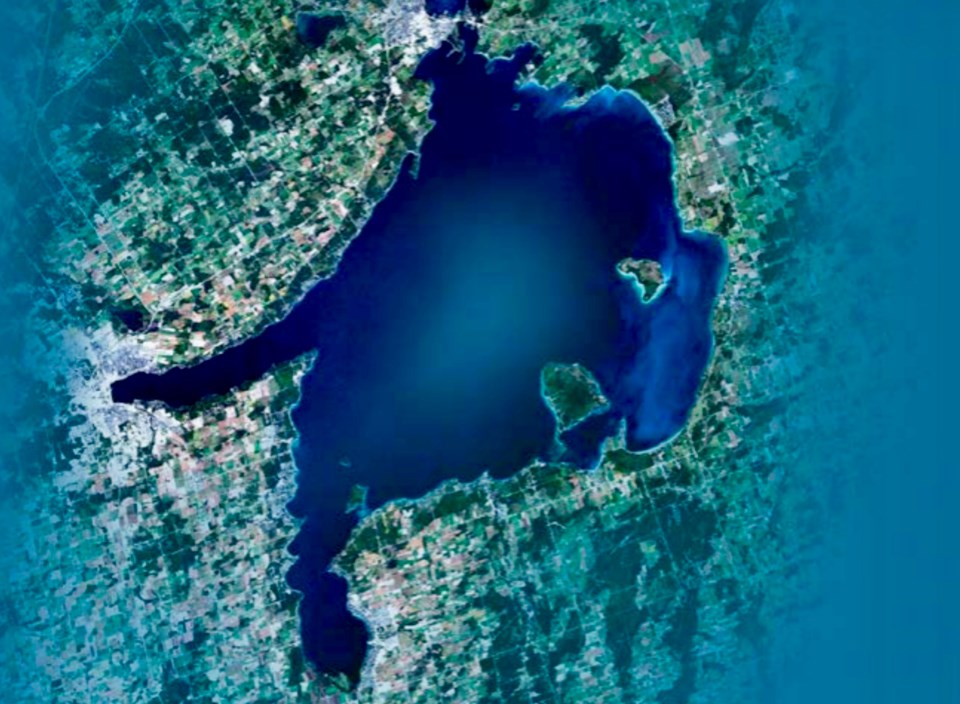Protecting Lake Simcoe from phosphorus pollution, who to involve in doing that and how it’s funded were discussed but not necessarily solved by Barrie city council Wednesday night.
A letter to the province, requesting timelines, another letter to the feds concerning funding, and meetings with the Canadian and Ontario environment ministers were the gist of a convoluted direct motion that was approved.
How effective these measures will be is the question.
Deputy Mayor Robert Thomson noted the last Barrie council wrote 17 letters on different matters to other levels of government and got two replies resulting in zero action.
“It shows you the effectiveness of writing letters,” he said. “I think we’ve got to have actions.”
The direct motion says a letter of support for a phosphorus reduction project will be sent to Ontario’s minister of environment, conservation and parks, who is Barrie-Innisfil MPP Andrea Khanjin, with a request for a proposed timeline for implementation of the Lake Simcoe Protection Plan.
.png;w=960)
Correspondence will also be sent to the federal minister of environment and climate change requesting a funding envelope and parameters for the Lake Simcoe Cleanup Fund.
Mayor Alex Nuttall and CAO Michael Prowse will request a meeting with both the federal and provincial ministers of environment to discuss phosphorus reduction programs.
But Coun. Ann-Marie Kungl wanted a plan to reduce Lake Simcoe’s phosphorus pollution to 44 tonnes per year, with a target date of 2030.
Thomson said more work needs to be done first, such as meeting with the federal and provincial environment ministers.
“I think we can come to a reasonable target, whatever all three levels of government can work out. I think that would be a better approach than setting a target (now),” he said. “I don’t like to be set up for failure. There needs to be more work before we pick a number.”
Kungl said she disagreed.
“That’s unfortunate because it wasn’t just a number picked, it was one that was set years back,” she said. “Whether or not it’s achievable I think allows us to stay true to the intention of what we’re investing towards.
“Change the goal once we have more information, if we’re not going to hit it. But I don’t think we should just throw it out of the line of sight.”
The direct motion’s preamble says in 2009 the government of Ontario released its Lake Simcoe Protection Plan, which called for the lake’s phosphorus pollution to be reduced by 50 per cent, to 44 tonnes per year, to protect Simcoe’s cold-water fishery and prevent excessive weed growth and algae blooms.
Also that the federal government originally committed funding for a Lake Simcoe Cleanup Fund, with a first round of funding 2007 to 2012, and the second round of funding 2012 to 2017, had been cancelled.
That in the 2022 federal budget, Ottawa committed $19.6 million for a Freshwater Action Fund, including Lake Simcoe, but is yet to provide funding or parameters for a Lake Simcoe Cleanup Fund.
And that the Ontario government has spent approximately $13 million on Lake Simcoe environmental related activities, such as monitoring water quality, and the province initiated in 2022 a $24-million, three-year investment to build a Lake Simcoe phosphorus reduction project to help reduce phosphorus discharges from the Holland Marsh into Lake Simcoe.
In a Dec. 13 letter to the editor in BarrieToday, Khanjin noted the Lake Simcoe Protection Plan — a 10-year report on the lake — indicates its health is improving as a result of actions taken to safeguard it.
Recently, Khanjin announced funding of $1.3 million to protect Lake Simcoe by working with conservation leaders like Lake Simcoe Region Conservation Authority.
“This builds on the over $40 million our government has invested to protect Lake Simcoe since we came to office in 2018,” Khanjin said in the letter. “This includes $24 million earmarked for a phosphorus reduction facility, which our government is committed to building with help of municipal partners."
Khanjin also said her government’s fall 2023 economic statement announced $200 million in upgrades to critical stormwater infrastructure.
“This will help reduce the flow of phosphorus into Lake Simcoe and other lakes in the province,” she said.
Phosphorus is defined as a naturally occurring element essential for all life, found in plants, animals, humans and DNA, the building blocks of all life.
In water bodies such as lakes, a certain amount is necessary, but over time too much phosphorus can cause serious issues including excessive weeds, toxic algae and depleted oxygen levels in rivers, streams and, ultimately, Lake Simcoe.



